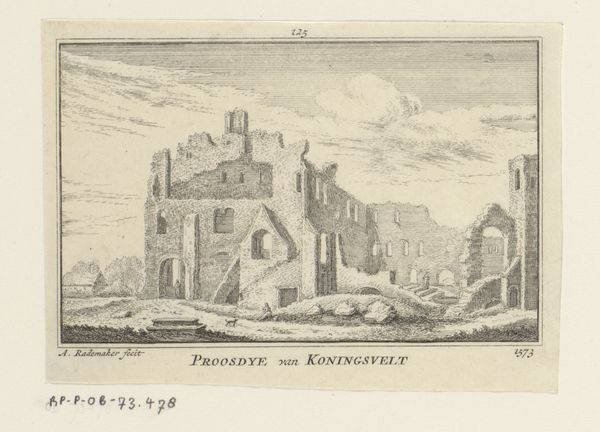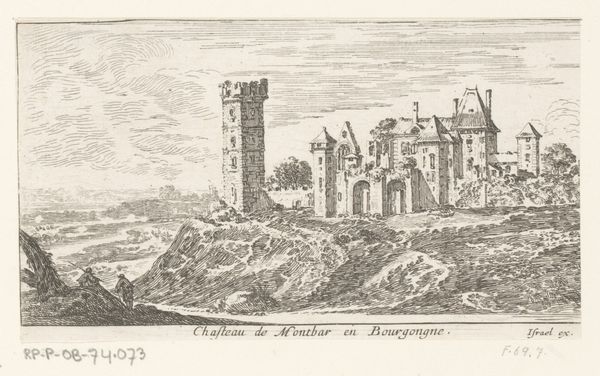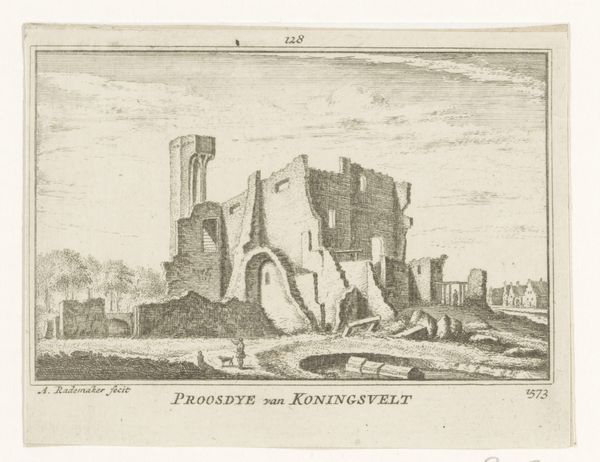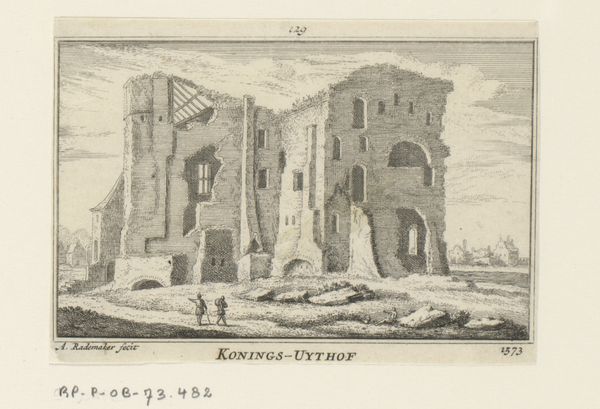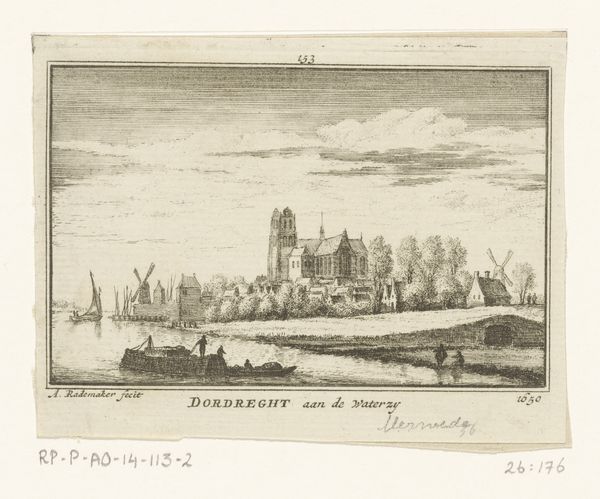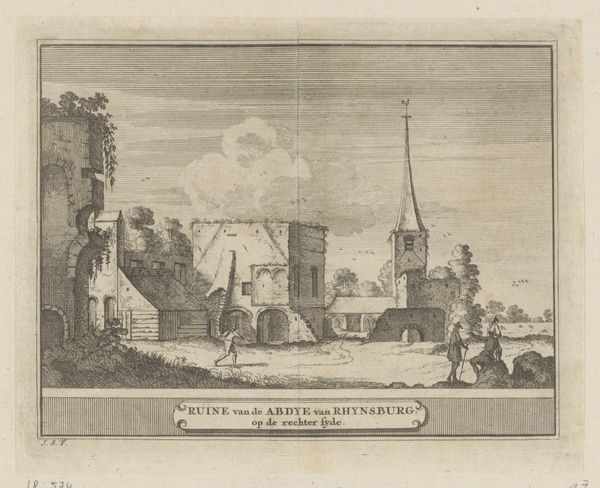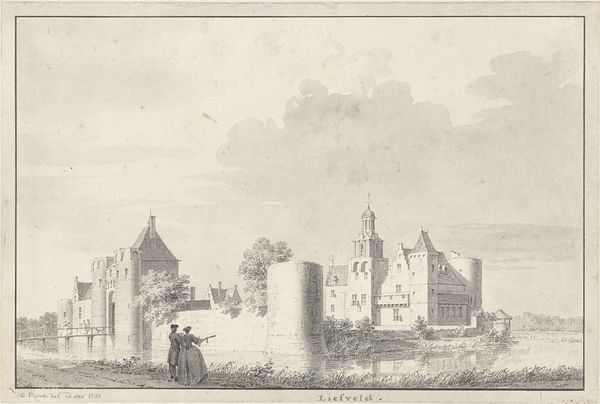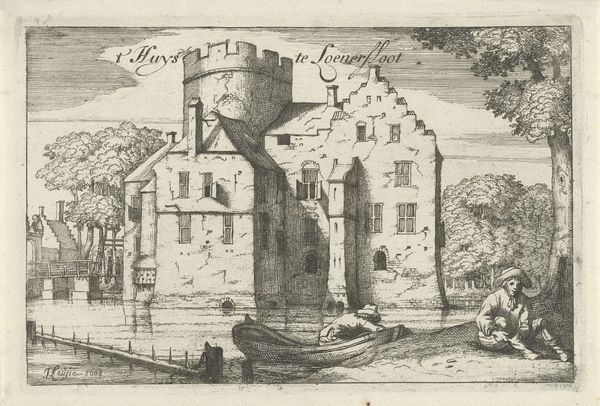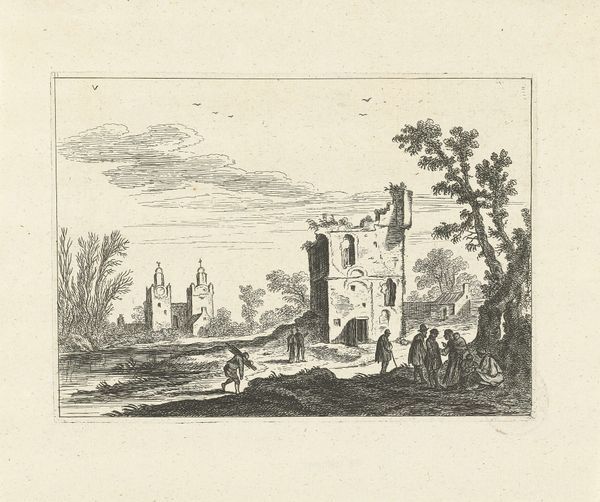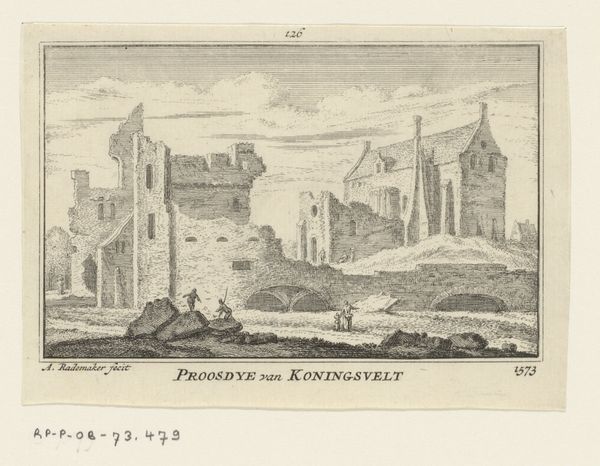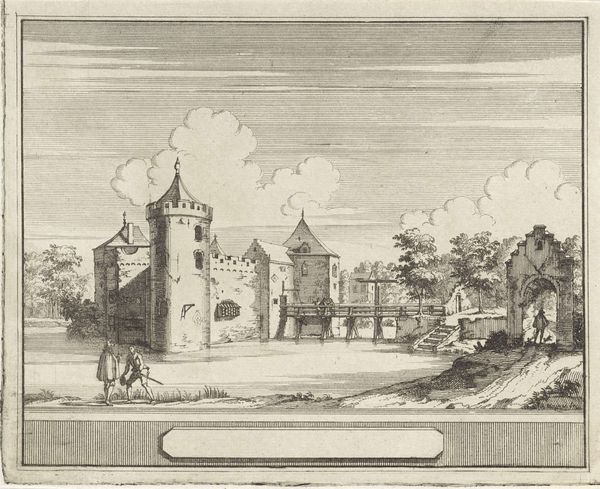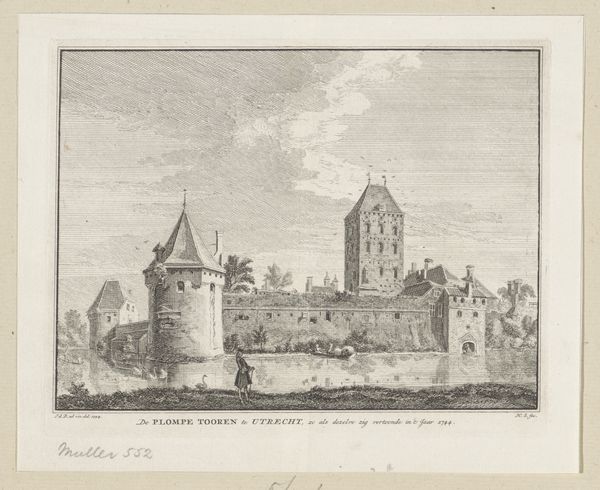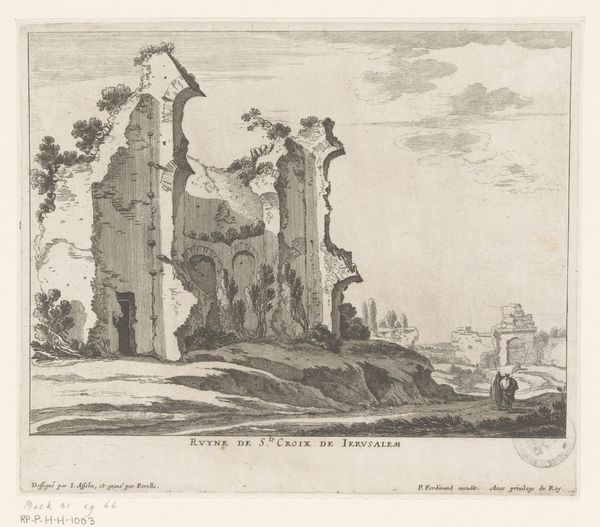
Gezicht op de geruïneerde proosdij van het klooster Koningsveld, 1573 1725 - 1803
0:00
0:00
abrahamrademaker
Rijksmuseum
Dimensions: height 84 mm, width 106 mm
Copyright: Rijks Museum: Open Domain
Editor: So, here we have Abraham Rademaker’s etching, "Gezicht op de geruïneerde proosdij van het klooster Koningsveld, 1573," likely made sometime between 1725 and 1803. It’s currently housed at the Rijksmuseum. Looking at this print, the devastation is really striking. What do you see when you look at it? Curator: What I find compelling is the transformation of labor. The ruin, once a testament to skilled craftsmanship and communal effort, is reduced to rubble, a raw material again. The etching itself, a reproducible image, makes this decay accessible to a broader audience, commercializing, in a way, the aesthetic of destruction. Notice the deliberate choice of etching. This particular medium allows for fine detail, yet retains a certain… crudeness mirroring the decaying structure. Consider the accessibility of printmaking – how does it change our relationship to places of cultural memory? Editor: That's interesting! So the print medium makes the ruined monastery a kind of commodity? Do you think Rademaker was critiquing that? Curator: Perhaps not overtly, but the mere act of depiction brings it into the realm of circulation, of exchange. The materials and labor needed for creation become just as vital to understanding its place in a growing early-modern market. Does the ruined monastery invite a melancholic reverence or function as material, a resource for a booming market for "historic" landscapes? What happens when something of great cultural and religious meaning is captured, duplicated, and made affordable? Editor: I never considered the labor involved in creating and distributing prints like this one, it's an important layer. I guess I was too caught up in what it *shows* rather than *how* it was shown. Curator: Exactly! Looking at the material processes behind artistic production, helps us understand the social forces at play. We get to see something else from a different perspective.
Comments
No comments
Be the first to comment and join the conversation on the ultimate creative platform.
